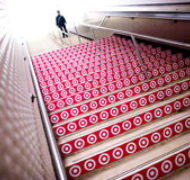The Perverse Monstrosity of Our Beautiful Work
Blog / Produced by The High Calling
It was the suckiest letter I ever received.
One friend pored over the words and responded, “It reads vindictive. How could someone speak this way about your beautiful writing? I feel like I’ve been punched in the gut and can hardly breathe.” Another said, “Throw that away and never look at it again.”
The reactions were strong, and I admit that if I hadn’t been around the block a few times, I might have taken the message to heart—maybe used the sheet for target practice and certainly not chosen to speak about the sucky-letter-in-question.
So why am I talking? And why did I even tell my 12-year-old daughter about those unfriendly words?
Here’s my three-word answer: Marschall, Johansson, Gehry.
As luck or the Divine would have it, I taught an art class the day I received the-suckiest-letter-ever. There’s nothing extraordinary about that except I’d chosen to focus on the story of Ken Marschall. Marschall is a gifted artist whose work with realism has earned him a solid career as a film matte painter. He’s also a Titanic aficionado and has produced countless meticulously-detailed pieces, commissioned both privately and commercially.
But Marschall’s first attempt to enter an art show was rejected when the committee said his Titanic painting was “not art” because it was “too realistic.” Soon after, a gentleman who had seen the rejected piece recognized Marschall’s talent and commissioned a new work. This was the beginning of a long and lettered artistic profession, and today he is the world’s leading Titanic artist.
Was the focus on Marschall’s story a kind of serendipity for me? Maybe. I had spent the morning reminding students to embrace their gifts regardless of criticism and rejection. After all, good work often finds audience despite pockets of rejection, just like Marschall’s did, and I wanted to inspire the students with a message of resilience.
Over the next week, this message repeated itself through various unexpected means. Listening to an interview with Scarlett Johansson, I was struck by her observation that professionals have to live with criticism. It’s par for the course. Good work doesn’t just find audience; it also finds anti-audience.
Take architect Frank Gehry, for instance. A few days after the Johansson interview, I happened upon a documentary of Gehry’s journey and achievements. Like many professionals, Gehry has his moments of doubt and creative mishaps, but as a successful architect he also demonstrates remarkable resilience and accomplishment.
Still, some critics have made it their mission to save the world from the likes of Gehry by being “honest” about his work. Such honesty has been expressed through words like ugly, monstrosity, and perverse.
This is not to say his critics are never right, which is what makes the whole process a tricky matter. Harsh criticism can hurt and disillusion, because it sometimes includes insights about our needs for growth.
And this is why I discussed the sucky-letter with my 12-year-old daughter. She and I have been having conversations that go something like this…
“My writing is so bad.”
“Well, it does have certain weaknesses,” I answer, “but that’s not the whole story. Listen, Sara, it’s important to be realistic in two directions. You need to be realistic about your weak points, but you also need to be realistic about your strong points. A lot of your writing is incredibly beautiful—better than a great deal of adult writing I’ve seen. You need to remember that.”
It’s essential for my sensitive daughter to develop this kind of clear-mindedness if she’s going to face the criticism she’ll eventually encounter as a talented professional. By sharing about the letter, I was introducing her to the way of the worker’s world; I was also demonstrating the very resilience I hope she’ll develop over time.
In the end, the problem with extreme criticism is that it doesn’t tell the whole story. Or maybe it almost does, but in an unexpected fashion. Thinking on Gehry, I concluded that one reason he draws such intense criticism is because he’s done an excellent job of honing his vision and craft. People who don’t like Gehry’s brand of architecture are going to have an extra-strong reaction to his work; it’s just so good in a way they despise.
My daughter and I discussed this too, on a sunny day, driving through a peaceful residential neighborhood. Then she surprised me by bringing up the matter of the sucky-letter. “Hey, I think that person actually gave you a big compliment.”
Perhaps.
Image by Thomas Hawk. Used with permission. Sourced via Flickr.
Post by L.L. Barkat, author of Rumors of Water: Thoughts on Creativity & Writing. A modified reprint of an article originally featured at The Curator.
—For more thoughts from L.L., check out our recent interview with her, on the writing life.
“Most of the material on The High Calling is available for reuse under a Creative Commons 3.0 license. Unfortunately, work by Laura Barkat is not available for reuse. If you are interested in reprinting work by Laura Barkat, please contact her directly.”





